
Statue of Pedro 1V, Rossio Square
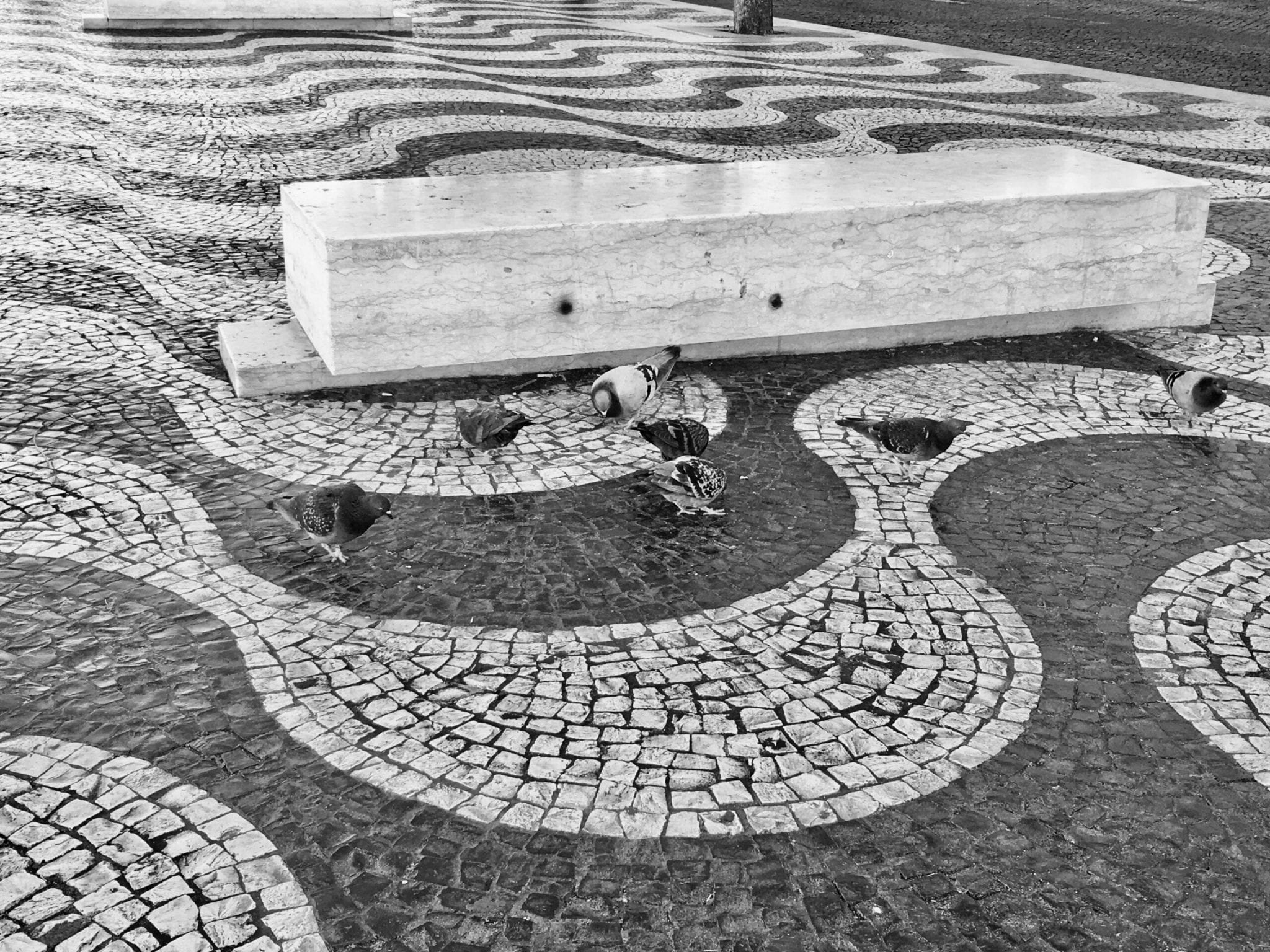
Cobblestone design, Rossio Square
A TUK-TUK TOUR of LISBON — The Most Fun You Can Have on Three Wheels
Before the pandemic, after. years of dormancy, Lisbon found itself in the midst of a resurgence that attracted a rush of tourists, eager to be part of this hip and happening city. Laid out with beautiful squares and green spaces, rich in history and tradition, filled with cultural treasures, it was besieged with tourists eager to share its attractions. One of the most scenic cities in Europe, it can now be toured by tuk-tuk, an easy way to negotiate the maze of narrow winding streets to capture the best views.
Most commonly found in Asia, the tuk-tuk is becoming almost as popular in Lisbon as it is in Bangkok. I had arranged to meet Ludovico, my tuk-tuk guide at Rossio square, with its ‘wavy’ cobblestone walking surface – a distinctive design that represents the waves of the ocean. Arriving on time, we stopped for one other guest. Then, with a little introduction and a brief history lesson, we bumped along the cobblestone streets, dodging the hordes of pedestrians and the famous yellow and red trams, hanging on tight as we rounded each corner, with the wind blowing in our hair while we took in the sights.

Ludovico has an impressive bio. He speaks five languages fluently and has an extensive background in history. In 2012 he returned to Lisbon after twelve years abroad where he was studying and working as a history professor. At the time, living in the old town, he noticed tuk-tuks in among the traffic carrying tourists, doing tours. This gave him an idea, He had all the correct credentials and then some. Why not have fun getting to know the city even better, sharing his knowledge, and his passion for Lisbon and become a tuk-tuk guide? And that is how it happened.
His commentary was always interesting, original, and spontaneous and he was a fountain of information that he generously shared, on a variety of topics. With a ready smile and a warm personality, Ludovico’s tour became a unique opportunity to get a better understanding of the changes that have finally brought Lisbon out of its long sleep transforming it into one of the most vibrant cities in Europe.

The Seven Hills.
We were off to experience the seven hills of Lisbon. To be accurate there are more than seven!! Many of the roads are narrow, with unexpected turns. They are also steep and cobblestoned, winding their way up and down and around the hills with surprising vistas at every turn. A tuk-tuk is the best way to get an overview of the city because it can negotiate the network of little streets with the greatest of ease — especially in the hands of a skilled driver who knows his way around!!
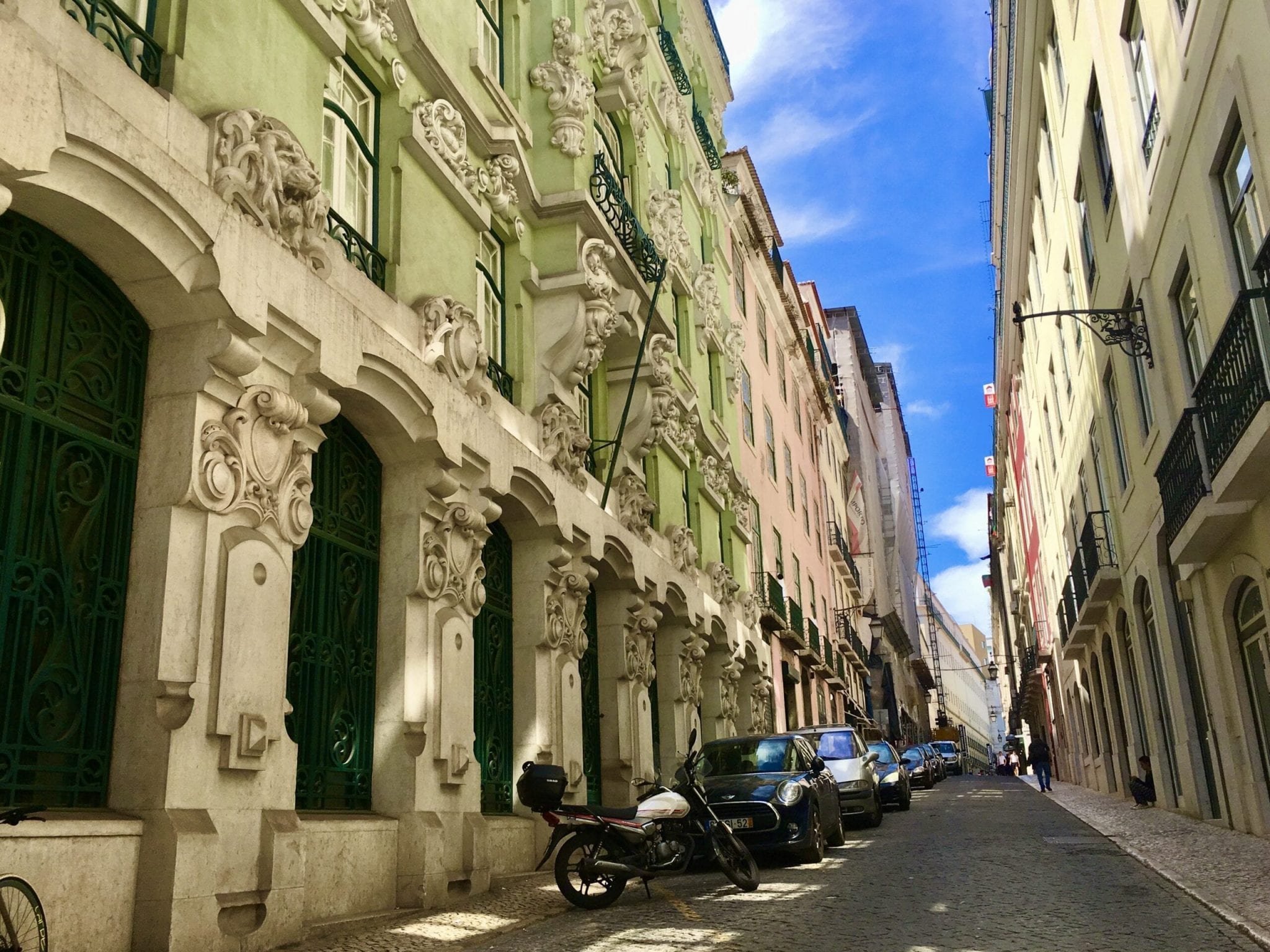
Rossio and Baixa
Moving quickly through the town, we passed Rossio with its many cafes and restaurants, then Baxia with magnificent wide avenues reminiscent of Paris. Then there was Commercial Square, one of the most beautiful squares in Lisbon, adorned by historic buildings — each one representing a segment of Portuguese history. Leading off the square is Rua Augusta, a wide cobblestone pedestrian-only street, attracting a large crowd of leisurely people strolling, looking in the elegant old-world storefronts, stopping at the coffee shops and ice cream vendors,
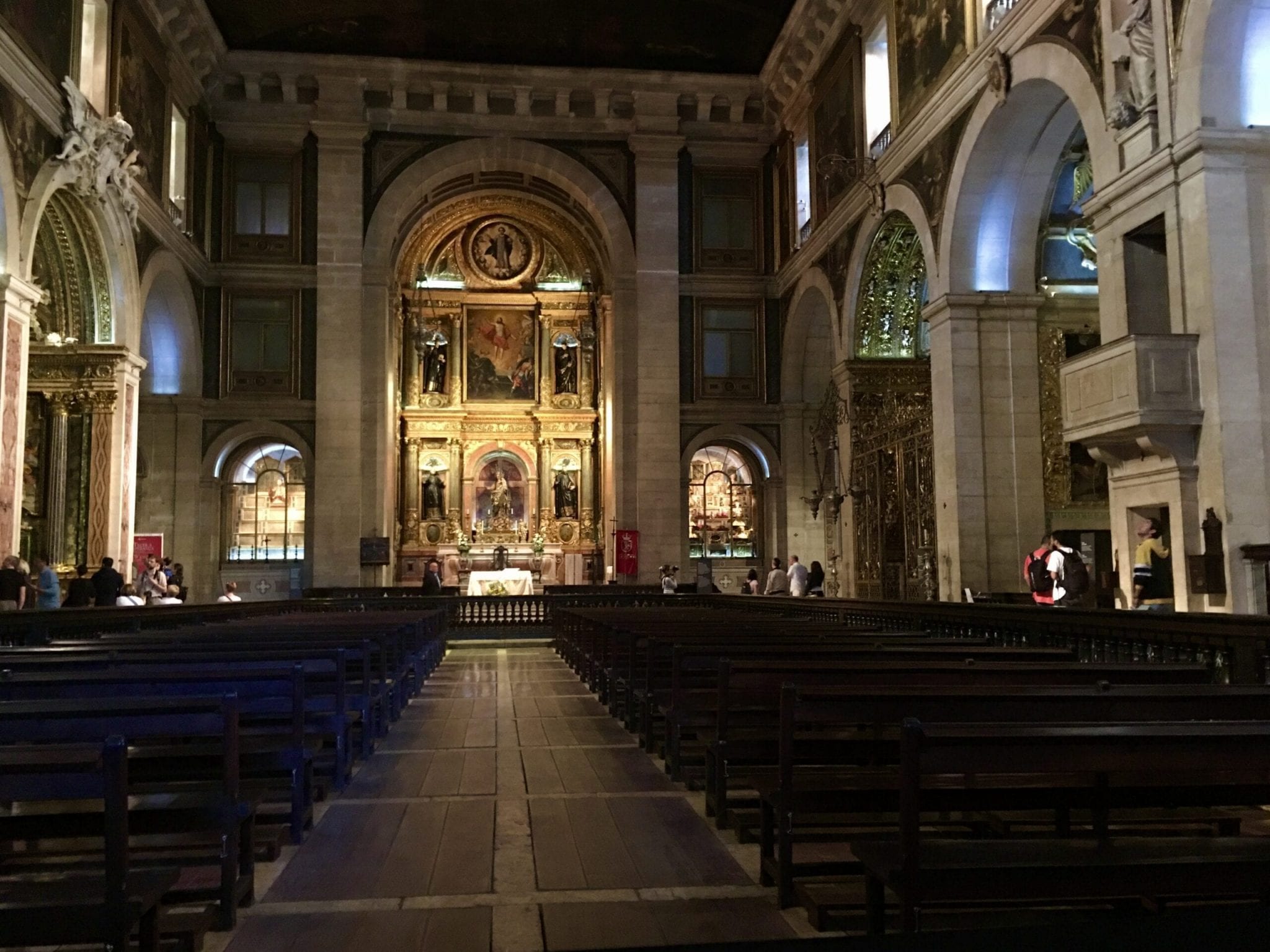
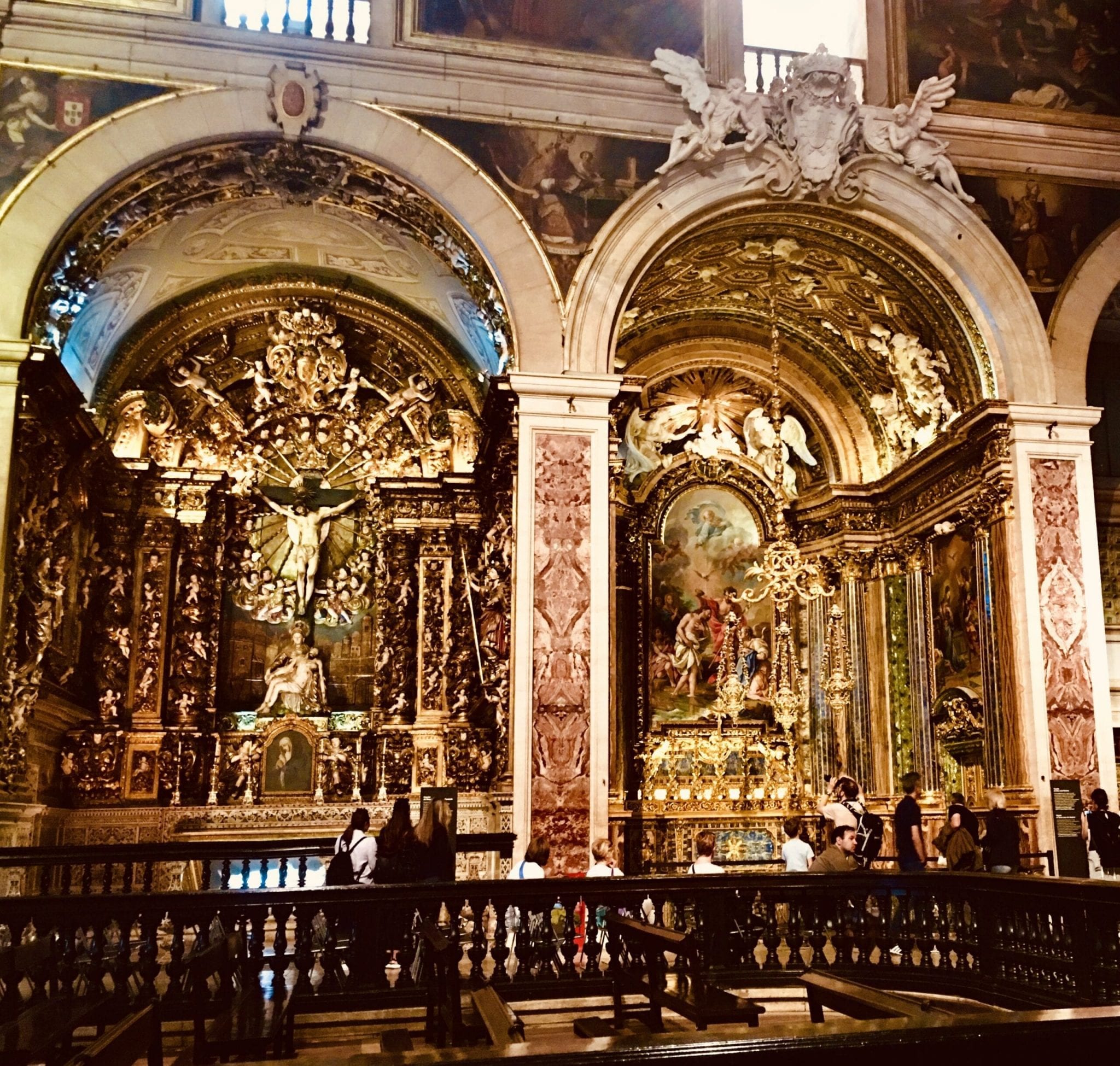
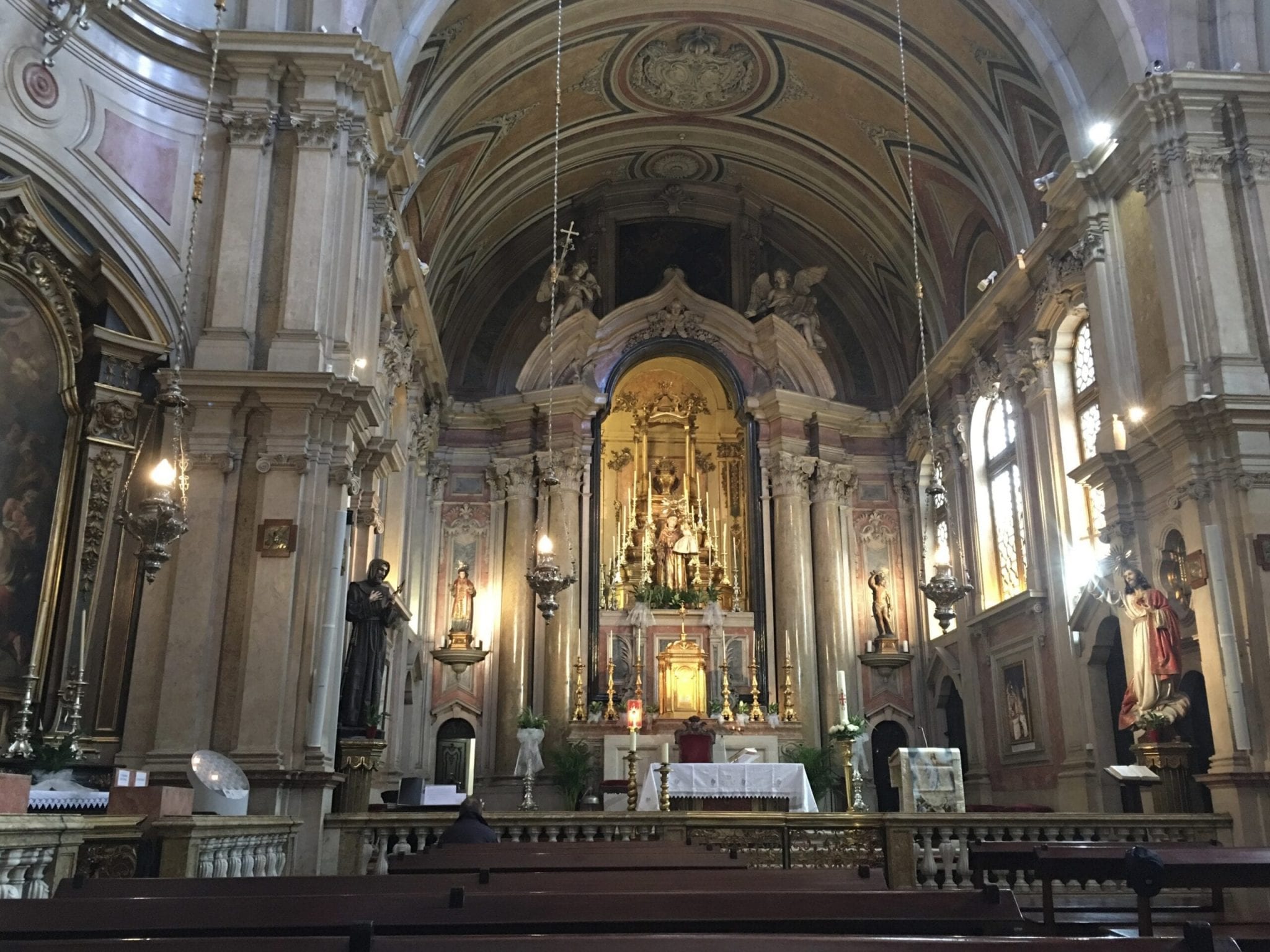
Sao Roque Church.
Up one of the hills that seemed effortless in the tuk-tuk, we arrived at the Sao Roque Church. Recently restored, the whitewashed exterior gave no hint of the interior opulence. It is a 16th-century Baroque design, a masterpiece, described as one of the most beautiful churches in Portugal — and it truly was spectacular. The chapels and walls were ornately covered in layer upon layer of gold and silver leaf that dazzled the eye. Meticulously designed polychrome marble lined the walls, domed ceilings, and floor. The walls were further embellished with precious stones of lapis lazuli, amethyst, alabaster, and agate. What makes this Church extraordinary is that the most ornate of the Chapels had originally been assembled in Rome, to be blessed by the Pope, then disassembled and shipped to Lisbon on three separate ships, before being re-assembled inside the Church. The exquisite paintings of biblical imagery are in fact not paintings but detailed mosaic works of art further enhancing the extravagance of the decorations. I sat quietly in one of the pews, trying to take it in… but it was soon time to move on as there was much more to see.

Saint George’s Castle in the distance
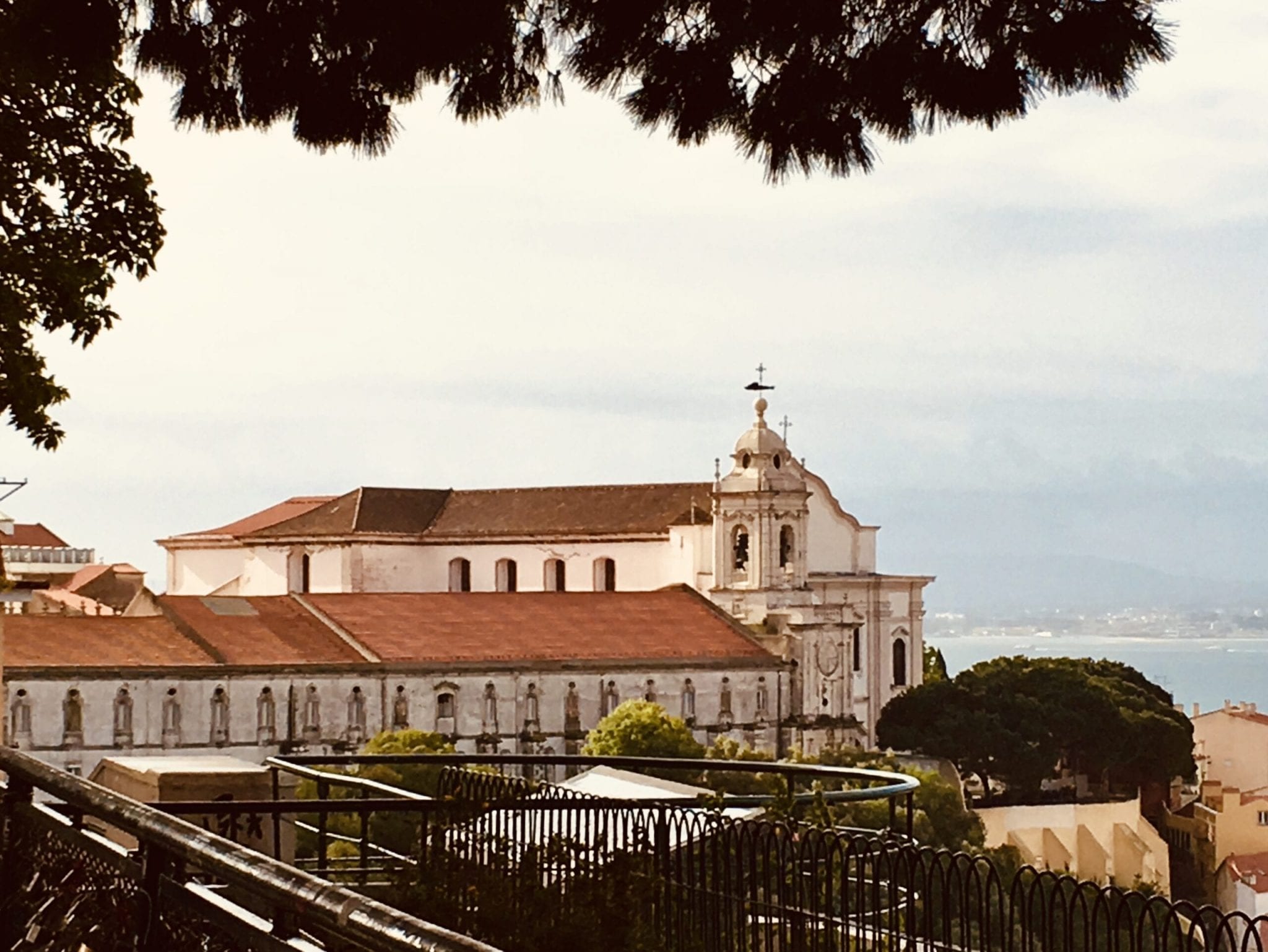
Saint Geroge’s Castle, Sao Vicente de Fora Monastery,
There we were, chugging up another hill, listening to Ludovico’s commentary, taking note of the changing landscape as we moved through the traffic. Arriving at a crest with the best possible views, Ludovico parked the tuk-tuk so that we could walk around the summit — we had arrived at Portas do Sol, one of the highest viewpoints and among the most popular places to view the city. Joining hordes of tourists, who had the same idea, we soaked in the sweeping vistas of the hillside. It was magnificent — I felt part of a picture postcard, seeing the Sao Vicente de Fora Monastery and Saint Geoge’s Castle high above layers of orange clay tile roofs descending to the Tagus River, with boats that resembled toys in the distance.
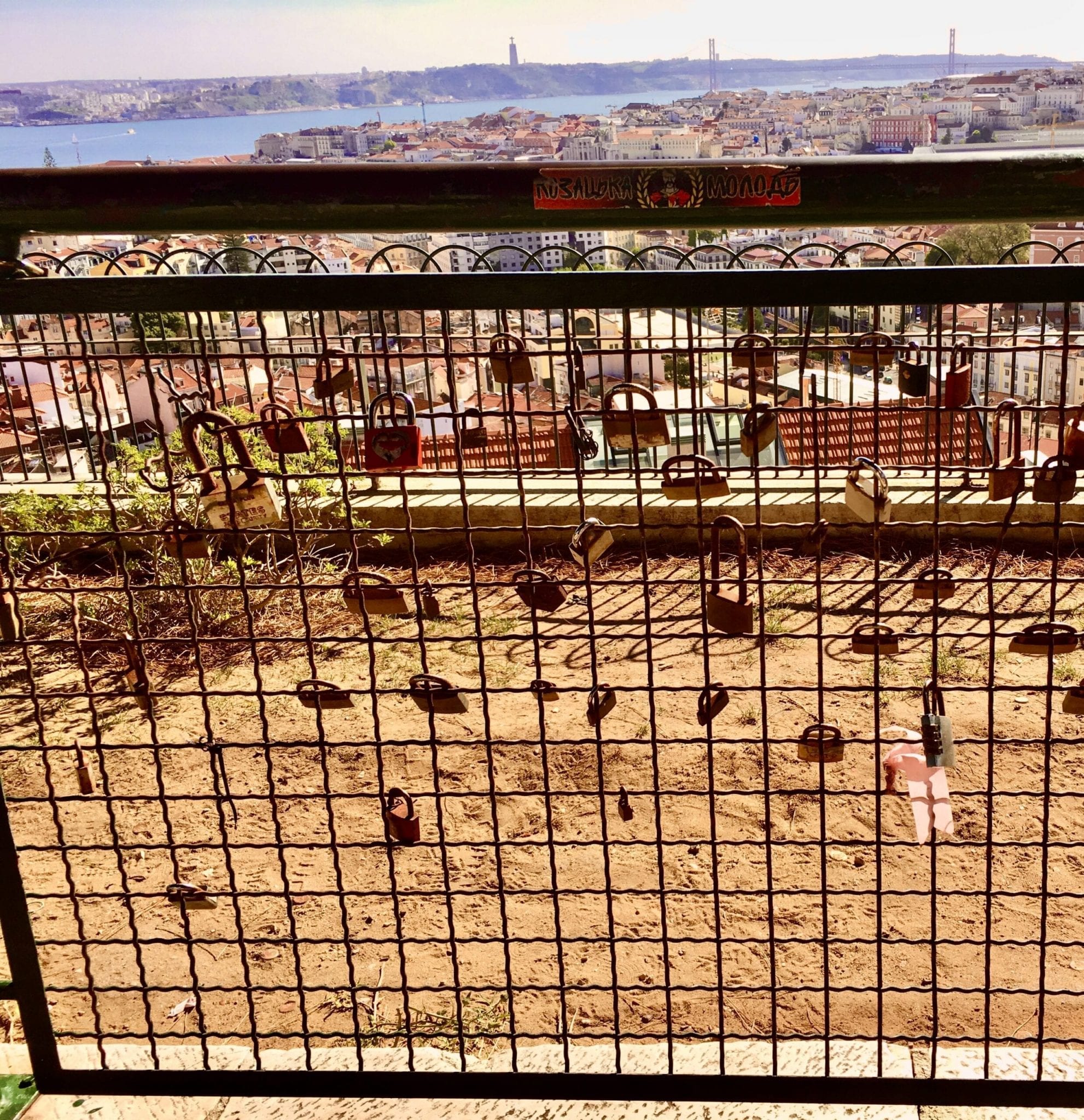
Lover’s locks.
Legend of the Lover’s Locks
A wire fence protecting us from falling down the hillside had many locks attached to it, a side effect of this being a very romantic spot frequented by lovers. A couple will go to the Portas do Sol, where they will swear undying love to one another, attach the lock to the fence, lock it, and throw the key away. This means they’ve locked their love inside, forever. Seeing how many locks had rusted and lost their luster, I only hoped the associated love story did not end the same way!
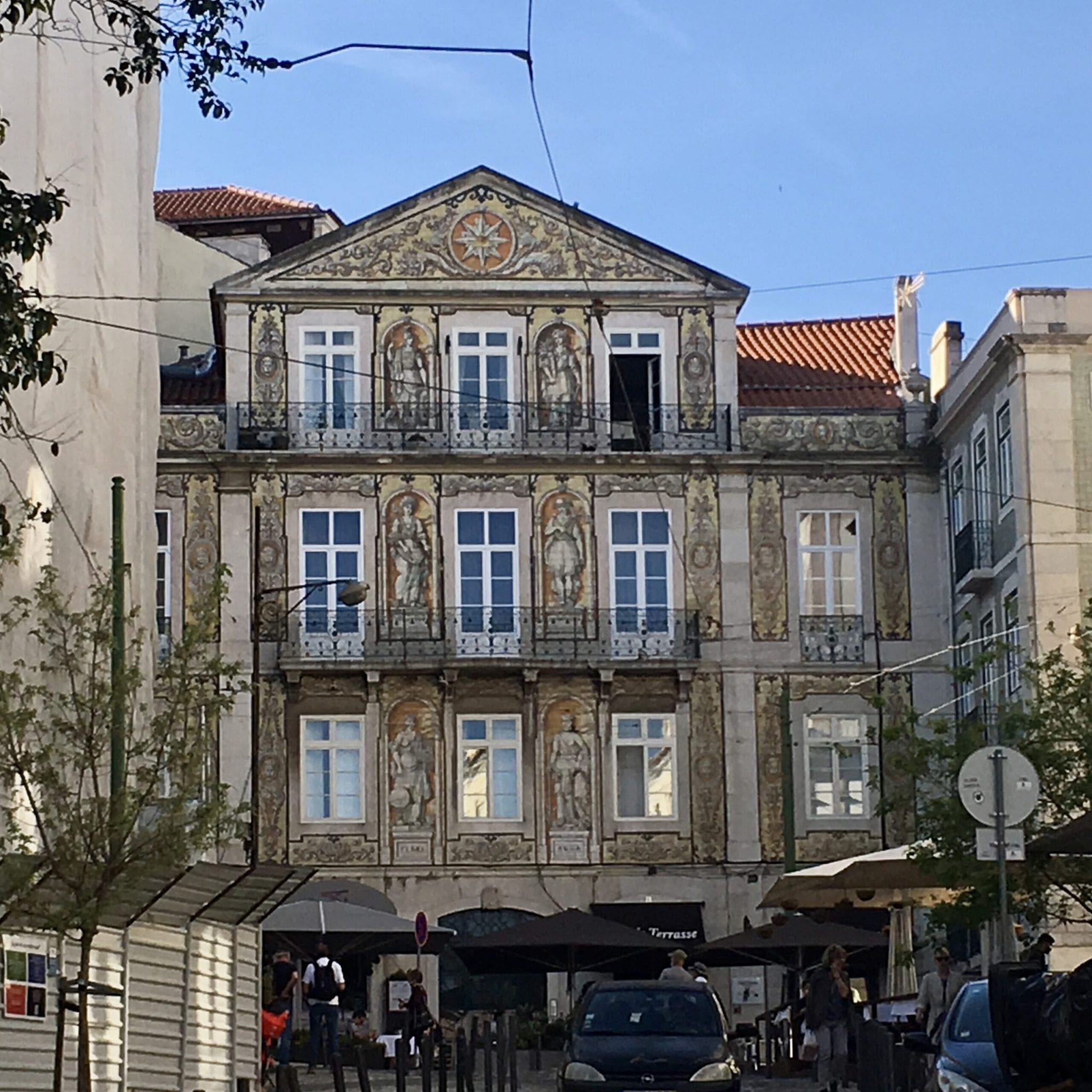
Graca
Returning to the tuk-tuk, we journeyed on to Graca, a well-preserved historic neighborhood, with steep narrow streets, a few lovely tiled buildings, many bars, restaurants, and noteworthy street art. We left the tuk-tuk on a beautiful square, near a charming tiled building, a bar where people were socializing, knocking back shots of ginginha, the local cherry liqueur, and a cafe with tables on the sidewalk – a very local scene. This is the highest neighborhood in Lisbon and requires strong legs to manage the inclines.
The houses dated from the 19th-century when industrialists moved their workers into the neighborhood as affordable housing for the small factories in the area, In the last couple of years, foreign investors have tried to buy up these little houses to convert them into AirBnBs, but the residents have managed for the most part to keep them out and maintain the authenticity of the neighborhood.
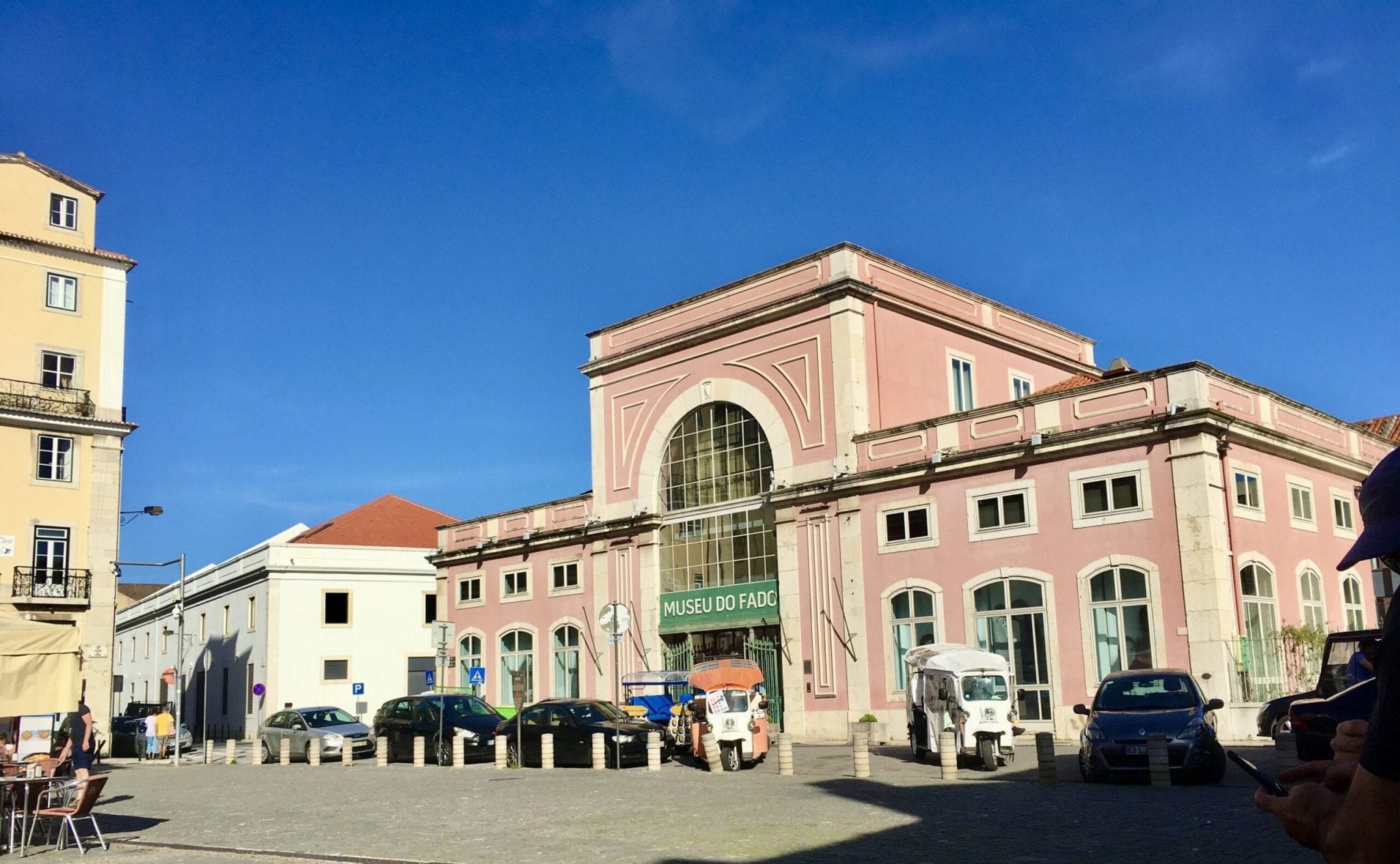
Fado Museum
Our next destination was the Alfama neighborhood, passing the Fado Museum on the way. Fado, a genre of music, originated in the Alfama in the 1820s — it is melancholy and haunting, accompanied by mandolins and guitars. Fado is intrinsically Portuguese – you may like it or not, as it is inclined to be maudlin. It is an essential part of the Lisbon ”experience’ and should be sampled. There are several bars where one can listen to Fado in this neighborhood, accompanied by an appropriate amount of wine, and the effects of the wine are noticeable as the evening wears on.
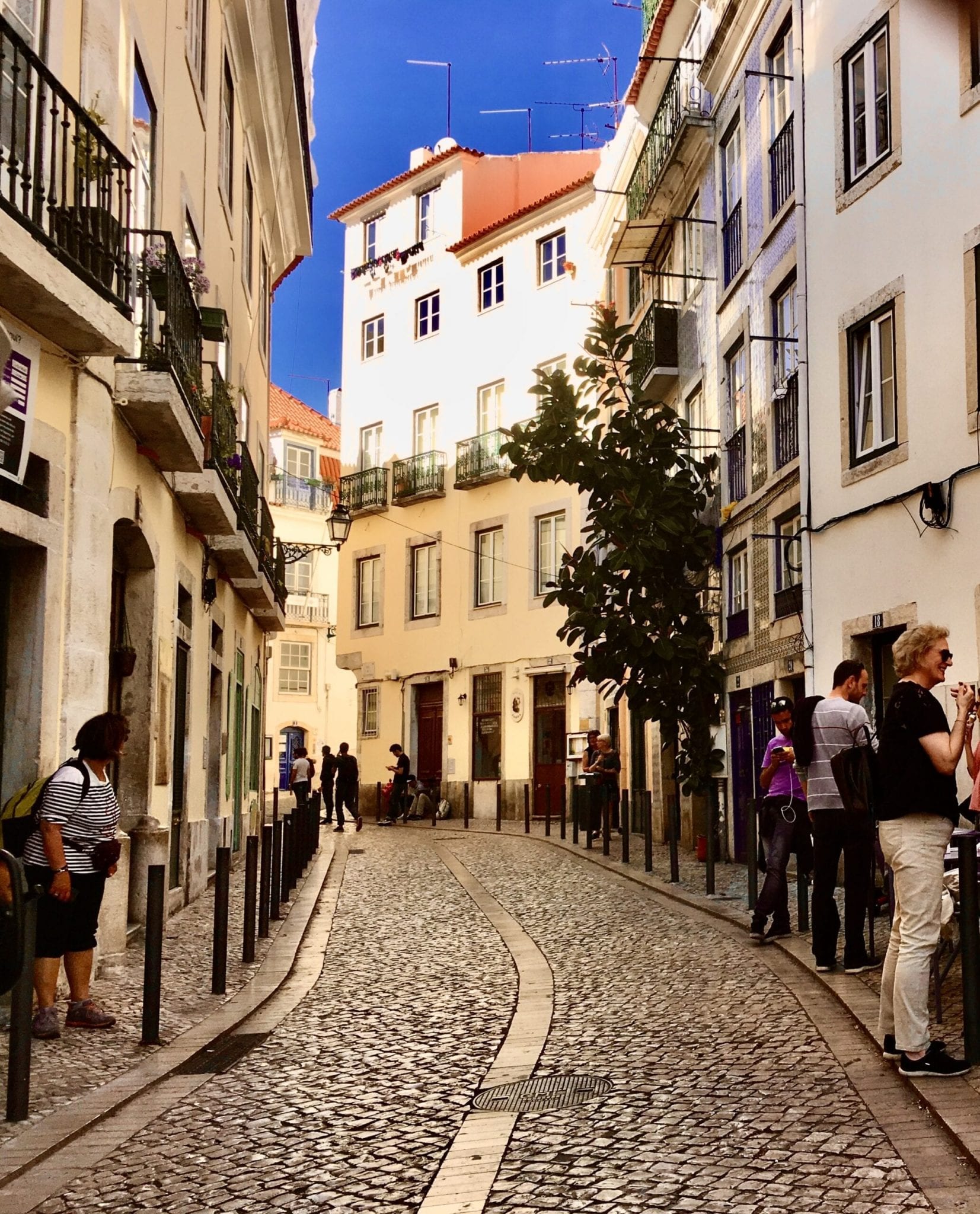
Alfama
Alfama is another of the older, ethnically diverse, and historically interesting neighborhoods in Lisbon, with the familiar narrow winding cobblestone streets. It was built in the 8th Century during the Muslim conquest of Portugal and remains intact from that period, having survived the great earthquake of 1755 that destroyed most of Lisbon. The Alfama is built high up on one of the hilltops, overlooking the Tagus River. Tucked in between the houses are little shops, restaurants, bars, and galleries. Here, former residents were not able to resist the investors, who arrived in the last few years with the Air BnB ‘invasion’. By buying up the workmen’s cottages and dividing them into smaller units for short term rentals, some of the intrinsic charm of the Alfama, with its narrow streets, friendly neighbors, and overhanging wash lines has been lost forever. Many of the original residents have been pushed out by gentrification and now live in new developments on the periphery of Lisbon.

Prince Edward VII Park
We went by the Edward VII Park, 62 acres in size, a huge grassy area laid out in a formal style. with avenues of trees on either side and unobstructed views to the ocean. This is a lovely centrally located area where people can exercise and walk their dogs. The park commemorates the visit of King Edward VII of England to Portugal in 1902 — the two countries have enjoyed a mutually beneficial friendship for generations.

Pasteis de Nata – Portuguese custard tarts.
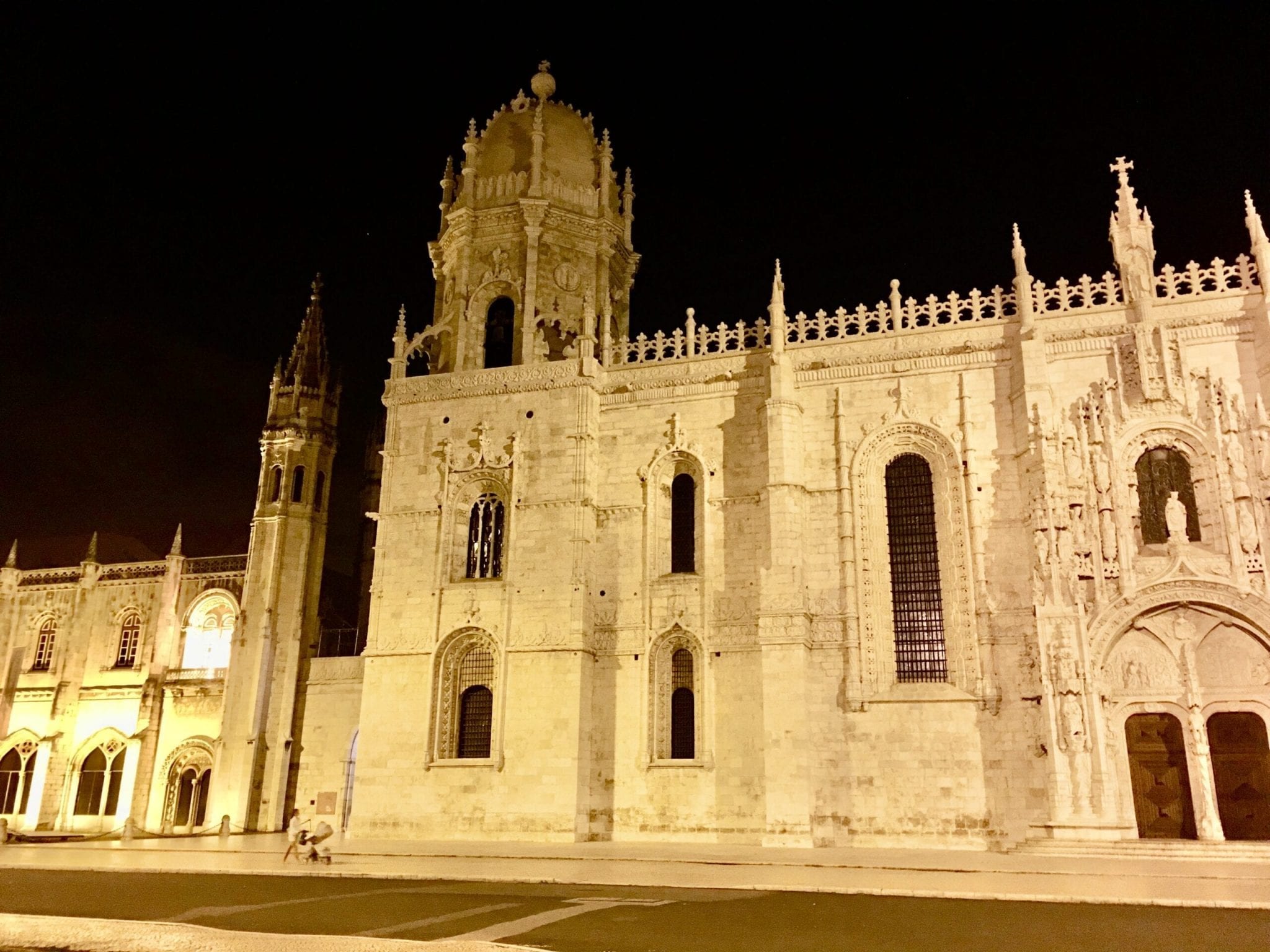
Jeronimo Monastery in Belem.

Belem Tower.
Belem
At our final stop in Belem, near the heavily-carved 16th-century Jeronimo Monastery, Ludovico invited us to join him in a genuine Portuguese moment. Parking the tuk-tuk, he took out a bottle of ginjinha, the local cherry liqueur, and a box of pasteis de Nate (custard tarts) that were hidden underneath his seat, to be enjoyed as a farewell celebration to Lisbon. We stood in the street, still basking in the beauty of the tour we had just completed, eating the pastries, sipping the ginjinha with an incomparable view of the Belem Tower and the ocean as a backdrop.
The tour was about two hours long — with Ludovico’s running commentary, we passed through several neighborhoods and a few of the hills getting to feel the soul of this city through the words and eyes of our guide. It is a city with multiple layers of history dating from the many occupations that have defined it.
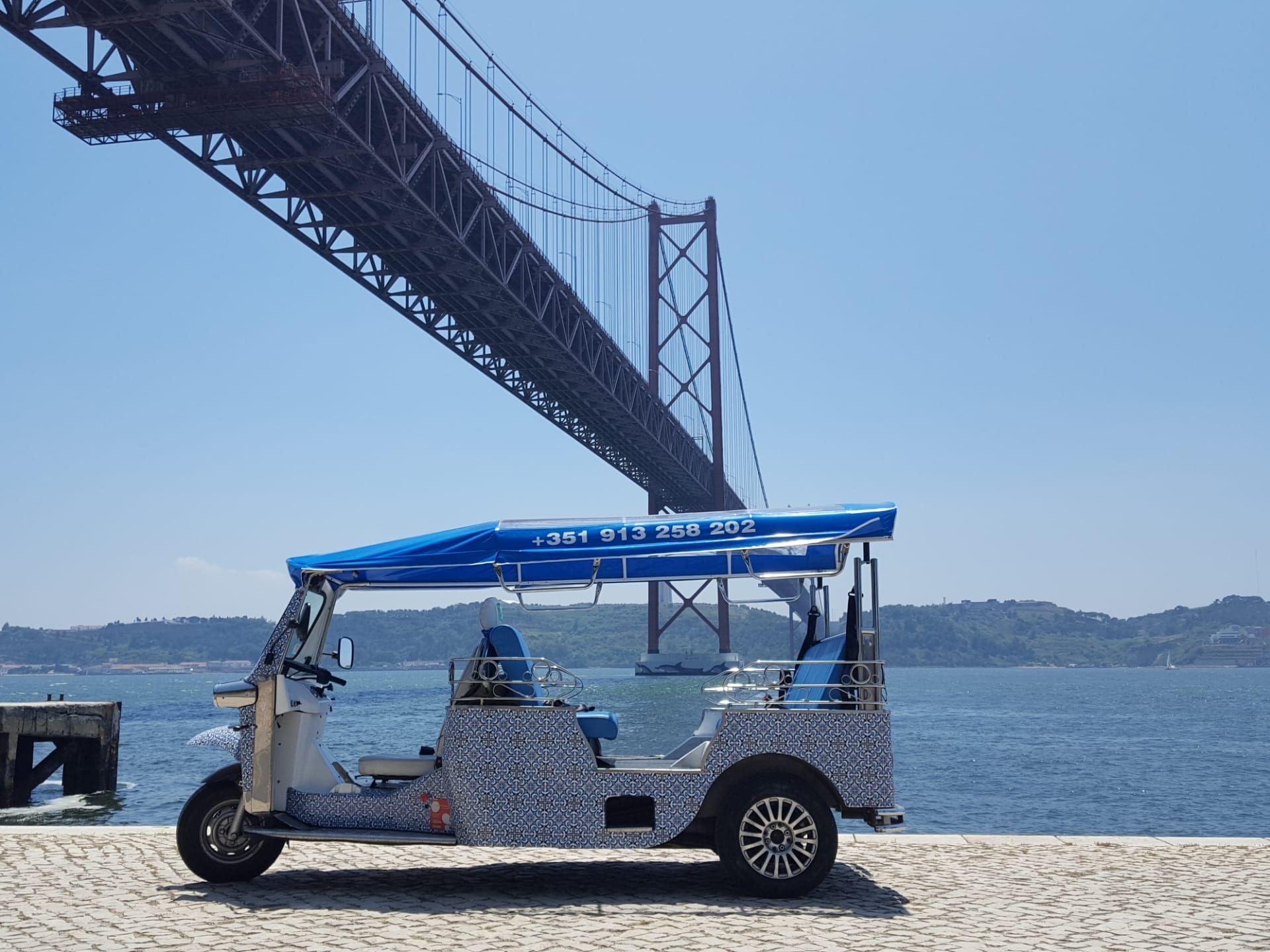
Sidebar.
The tuk-tuks in Lisbon have been fitted with a battery to keep the carbon footprint down, so they are a guilt-free pleasure! One can hail a tuk-tuk on the street, but I suggest reserving through a reputable company. I came to Ludovico through a recommendation and was able to check his drivers’ credentials, set a firm price, and exchange a couple of emails before hiring him. I can highly recommend Ludovico — if you are visiting Lisbon, make sure you reserve in advance.
Contact info. and rate:
Name of the tuk-tuk Guide: LUDOVICO BELLI.
Email: thetuktukdriver@gmail.com
What’s App number: 351913258202
Rate: 1 hour for 60 euros each, up to 6 people max. 2 hours for 100 euros each.
The tour can be custom designed, but the “usual tour” takes in the seven hills including the old town, some great viewpoints, and the bohemian side, the neighborhoods of Chiado, Bairro Alto, and Belem It is already excellent and well thought out, but Ludovico will custom design a tour to your specifications if so desired. His commentary is spontaneous and not spoken parrot-like, and one can discuss diverse topics freely making for an interesting experience.

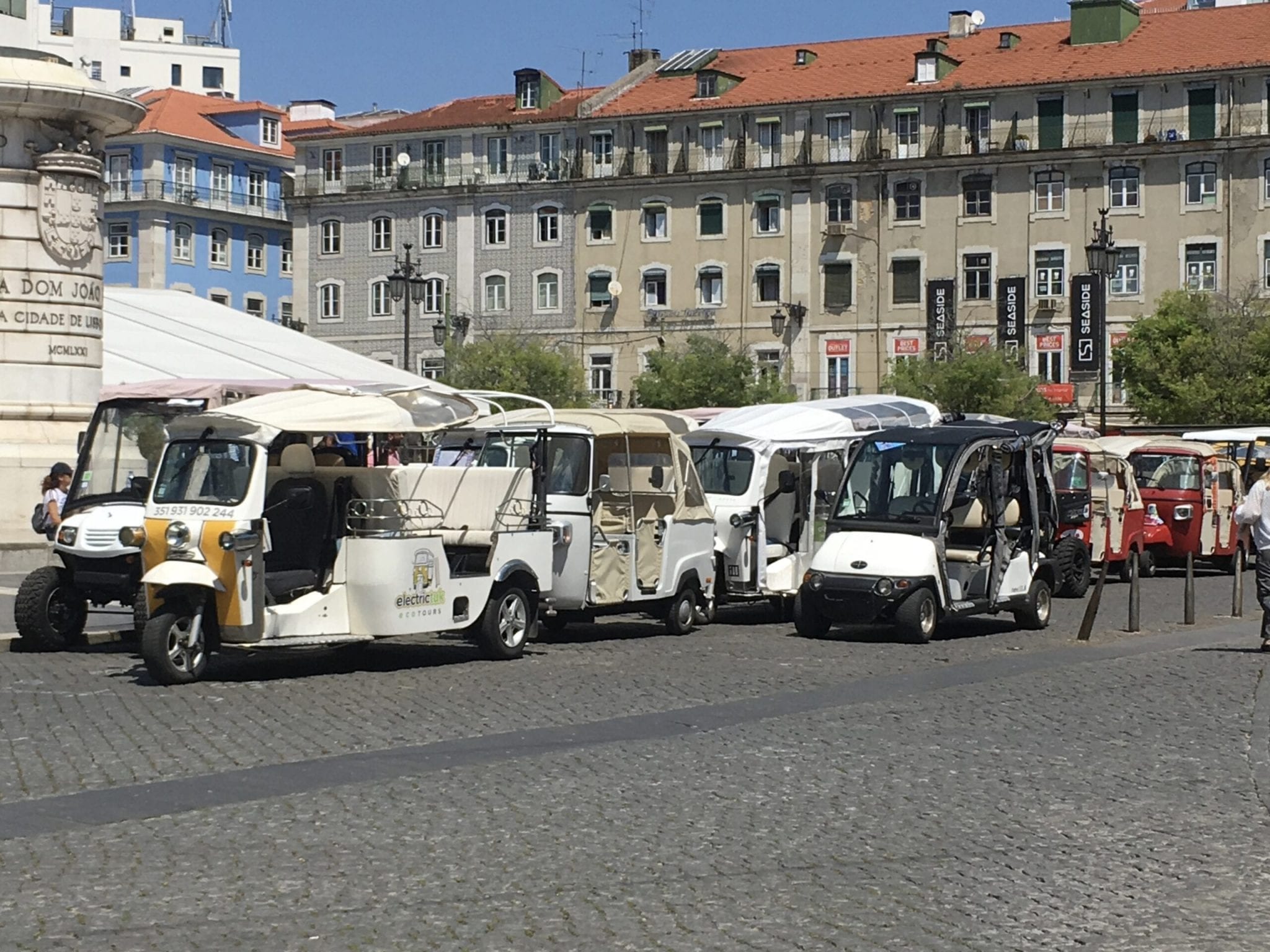
Phyl: What a wonderful morning I have enjoyed through your eyes and magical writing style. Sheltering in place can feel like a tour through a beautiful city when reading your words and looking through the window of your photos. Thank you for sharing. The tour was lovely and I can’t wait to see where you take me next!
Sheila,
Thank you for joining the tuk-tuk tour as we traveled through Lisbon – and thanks for the encouraging words. I will let you know when there is another tour coming up.
Phyl.
What a fabulous tour of Lisbon you gave me this evening! Memories come flooding back. Thanks!
I envy the strength of your legs on the incline in Graca I dont know Portugal but you certainly give me a taste for it There.s nothing wrong with Ludovico either
lynette x
Lyn, that was last year – just as well I didn’t wait another year – not sure I would have managed it!
Thanks for reading and thanks for the humor.
Phyl.